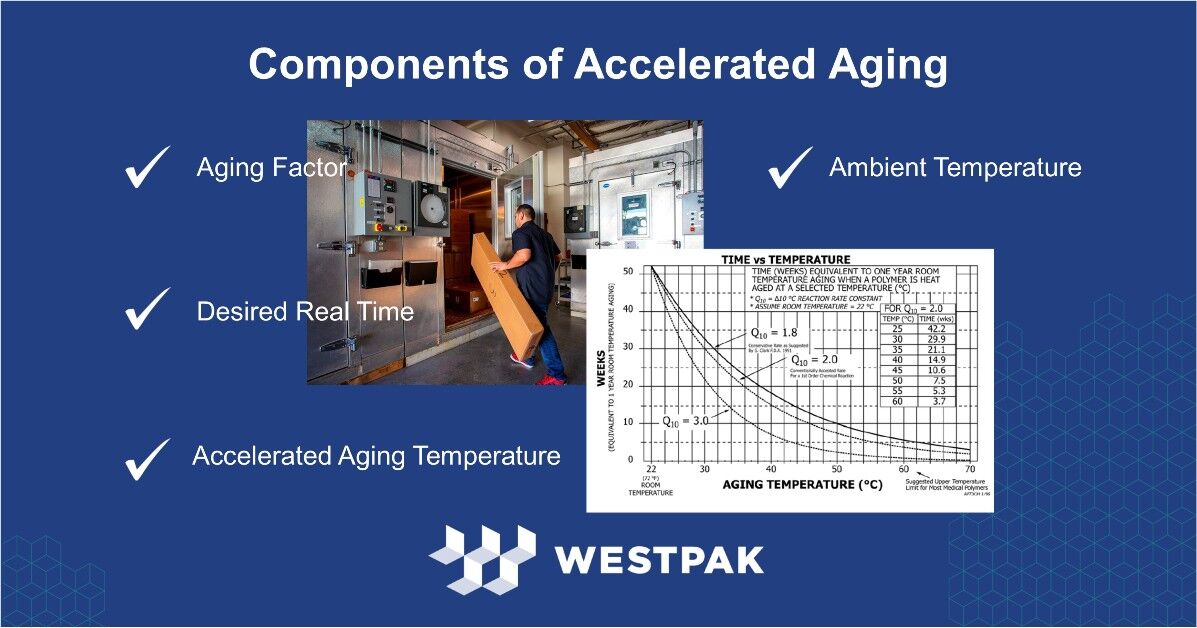As many readers are likely aware, Real Time Aging validation (Shelf-Life or Expiry Testing) is required for bringing a sterile medical device to market. However, device companies do not have the luxury of waiting two or more years to see test results before product release.
Fortunately, an FDA-approved, fast-track alternative exists: validation using Accelerated Aging, which will finish before Real Time Aging completes. The two different test methods must start simultaneously; Real Time Aging results will validate Accelerated Aging.
So, just what is Accelerated Aging? How does it work? The theory, endorsed by the FDA, is based on the Arrhenius equation and referenced in ASTM F1980 and ISO 11607-1. Essentially, the theory is that for every 10 degrees Celsius above ambient, the testing time can be reduced by 50%.
Here is the Accelerated Aging Factor estimate equation: AAF=Q10 [TAA – TRT)/10]
Lots of fancy acronyms, right? What do they stand for? Here they are:
- AAF is the Accelerated Aging Factor
- Q10 is the reaction (or activation energy) – usually, a factor of 2 is used, which is conservative
- TAA is the temperature the samples are tested at (most typical is 55 degrees Celsius)
- TRT is the ambient temperature to be assumed (between 20-25 degrees Celsius)
Our Accelerated Aging Time (AAT) calculator can determine the value for you.
By testing per ASTM F1980, products can go to market earlier, but as mentioned, Accelerated Aging is to be validated using Real Time Aging results data.
You can learn about the theory and history supporting the Accelerated Aging Factor by watching our webinar
Arrhenius Equation Demystified (60 minutes) and/or download its slide deck from Past Webinars.
